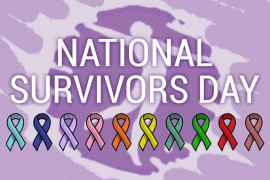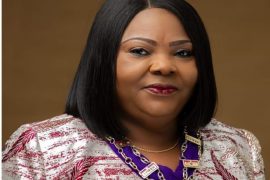By the American Association of University Women (AAUW)
In an era when women are increasingly prominent in medicine, law, and business, why are there so few women scientists and engineers? A 2010 research report by AAUW presents compelling evidence that can help to explain this puzzle. Why So Few? Women in Science, Technology, Engineering, and Mathematics (STEM) presents in-depth yet accessible profiles of eight key research findings that point to environmental and social barriers — including stereotypes, gender bias, and the climate of science and engineering departments in colleges and universities — that continue to block women’s progress in STEM. The report also includes statistics on girls’ and women’s achievement and participation in these areas and offers new ideas for what each of us can do to more fully open scientific and engineering fields to girls and women.
Stereotype Threat and Implicit Bias:
Barriers to Women in STEM
Stereotype threat arises in situations where a negative stereotype is relevant to evaluating performance. A female student taking a math test experiences an extra cognitive and emotional burden of worry related to the stereotype that women are not good at math. A reference to this stereotype, even one as subtle as taking the test in a room of mostly men, can adversely affect her test performance. When the burden is removed, however, her performance will improve. Stereotype threat is one compelling explanation for why women remain underrepresented in STEM fields.
Many people claim they do not believe the stereotype that girls and women are not as good as boys and men in math and science. However, even individuals who consciously refute gender and science stereotypes can still hold that belief at an unconscious level. These unconscious beliefs, or implicit biases, may be more powerful than explicitly held beliefs and values simply because we are not aware of them. Even if overt gender bias is waning, as some argue, research shows that unconscious beliefs underlying negative stereotypes continue to influence assumptions about people and behavior.
Project Implicit offers Implicit Association Tests (IAT) that measures the association between two concepts to determine attitudes about different social groups. For example, the gender-science IAT measures the association between math-arts and male-female. Between 1998 and the release of Why So Few in 2010, more than a half million people from around the world took the gender-science IAT, and more than 70 percent of test takers more readily associated “male” with science and “female” with arts than the reverse. These findings indicate a strong implicit association of male with science and female with arts and a high level of gender stereotyping at the unconscious level among both women and men of all races and ethnicities. The findings also challenge the notion that bias against women in math and science is a thing of the past. Women in STEM fields still face significant implicit bias on the basis of their gender.
In Math and Science, a Mind-set of Growth Benefits Girls
Individuals with a “fixed mindset” believe that intelligence is static. In contrast, individuals with a “growth mindset” believe that intelligence can be developed. Because of this they want to learn more and, therefore, tend to embrace challenges, persist when they encounter obstacles, see effort as a path to mastery, learn from criticism, and be inspired by the success of others.
Individuals with a fixed mindset are susceptible to a loss of confidence when they encounter challenges, because they believe that if they are truly “smart,” things will come easily to them. Individuals with a growth mindset, on the other hand, show a far greater belief in the power of effort, and in the face of difficulty, their confidence actually grows because they believe they are learning and getting smarter as a result of challenging themselves.
These research findings are important for women in STEM because encountering obstacles and challenging problems is in the nature of scientific work. When girls and women believe they have a fixed amount of intelligence, they are more likely to lose confidence and disengage from science and engineering when they inevitably encounter difficulties in their course work.
This is true for all students, but it is particularly relevant for girls in math and science, where negative stereotypes persist about their abilities. Therefore, in math and science, a growth mindset benefits girls.
Recruitment and Retention of Women in STEM Majors
Researchers Jane Margolis and Allan Fisher suggest that many factors can combine to increase women’s recruitment and retention in STEM. They stress that departments should pay attention to the student experience as well as faculty diversity to improve recruitment and retention of women.
Recommendations
Get Girls Interested in Science and Engineering
- Spread the word about girls’ and women’s achievements in math and science.
- Teach girls that intellectual skills, including spatial skills, are acquired.
- Teach students about stereotype threat and promote a growth-mindset environment.
- Talented and gifted programs should send the message that they value growth and learning.
- Encourage children to develop their spatial skills.
- Help girls recognize their career-relevant skills.
- Encourage high school girls to take calculus, physics, chemistry, computer science, and engineering classes when available.
- Make performance standards and expectations clear.
Create College Environments That Support Women in Science and Engineering
For Students
- Actively recruit women into STEM majors.
- Send an inclusive message about who makes a good science or engineering student.
- Emphasize real-life applications in early STEM courses.
- Teach professors about stereotype threat and the benefits of a growth mindset.
- Make performance standards and expectations clear in STEM courses.
Take proactive steps to support women STEM majors.
For example, sponsor social events to help integrate women into the department, provide a student lounge open to all students to encourage interaction outside of class, or sponsor a “Women in (STEM major)” group.





